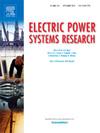深度学习增强GIL管道走廊气体监测:气体泄漏分布数据的超分辨率重建和传感器放置的优化
IF 4.2
3区 工程技术
Q2 ENGINEERING, ELECTRICAL & ELECTRONIC
引用次数: 0
摘要
气体绝缘金属封闭输电线路(GIL)是一个独特的环境,具有复杂的空间结构、广泛的跨越距离和封闭的空间,目前对六氟化硫(SF6)浓度的监测实践依赖于有限数量的传感器。气体浓度分布不易可视化,监测缺乏直观可见性。因此,我们采用计算流体力学(CFD)对典型气体泄漏场景进行模拟,构建了能够准确反映GIL系统物理状态的数字孪生模型,生成高精度数据集。我们提出了一种基于u -net的超分辨率重建(SRR)方法,该方法能够从有限的低分辨率传感器数据中重建高分辨率三维气体浓度分布。调查包括不同的传感器数量和分布对重建结果的影响。结果表明,增加传感器数量可以提高重建精度,均匀分布的传感器比不均匀分布的传感器效果更好。该方法便于将稀疏分布的气体浓度监测数据重构为高密度分布且直观可见的监测图像。为管道走廊传感器的优化布局和紧急情况下人员的安全疏散路径提供数据支持。本文章由计算机程序翻译,如有差异,请以英文原文为准。

Deep learning empowering gas monitoring in GIL pipeline corridor: super-resolution reconstruction of gas leakage distribution data and optimization of sensor placement
In Gas Insulated Metal Enclosed Transmission Lines (GIL), which are a unique environment with complex spatial structures, extensive spanning distances and enclosed spaces, the prevailing monitoring practices for Sulphur Hexafluoride (SF6) concentration depend on a limited number of sensors. The gas concentration distribution is not readily visualized, and the monitoring lacks intuitive visibility. Thus, we employed computational fluid dynamics (CFD) to simulate typical gas leakage scenarios and constructed a digital twin model that accurately reflects the physical state of GIL systems, generating high-precision datasets. We propose a U-net-based super-resolution reconstruction (SRR) method capable of reconstruct high-resolution 3D gas concentration distribution from limited low-resolution sensor data. The investigation encompasses the impact of varying sensor numbers and distributions on the reconstruction outcomes. The findings indicate that enhancing the number of sensors can improve the reconstruction accuracy, with uniform sensor distribution yielding better results than non-uniform. The proposed method facilitates the reconstruction of sparsely distributed monitoring data of gas concentration into a high-density distribution and an intuitively visible monitoring image. It provides data support for optimizing the distribution of sensors in the pipeline corridor and the safe evacuation paths of the personnel in case of emergencies.
求助全文
通过发布文献求助,成功后即可免费获取论文全文。
去求助
来源期刊

Electric Power Systems Research
工程技术-工程:电子与电气
CiteScore
7.50
自引率
17.90%
发文量
963
审稿时长
3.8 months
期刊介绍:
Electric Power Systems Research is an international medium for the publication of original papers concerned with the generation, transmission, distribution and utilization of electrical energy. The journal aims at presenting important results of work in this field, whether in the form of applied research, development of new procedures or components, orginal application of existing knowledge or new designapproaches. The scope of Electric Power Systems Research is broad, encompassing all aspects of electric power systems. The following list of topics is not intended to be exhaustive, but rather to indicate topics that fall within the journal purview.
• Generation techniques ranging from advances in conventional electromechanical methods, through nuclear power generation, to renewable energy generation.
• Transmission, spanning the broad area from UHV (ac and dc) to network operation and protection, line routing and design.
• Substation work: equipment design, protection and control systems.
• Distribution techniques, equipment development, and smart grids.
• The utilization area from energy efficiency to distributed load levelling techniques.
• Systems studies including control techniques, planning, optimization methods, stability, security assessment and insulation coordination.
 求助内容:
求助内容: 应助结果提醒方式:
应助结果提醒方式:


